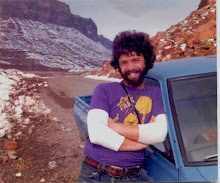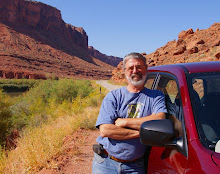
I don’t usually write travel pieces per se but in this day and age of crowded campgrounds and over marketed tourist traps, I’d like to mention a prosaic little area I recently had the pleasure of spending a night at. For anyone traveling through the vast open spaces of southern Idaho, Bruneau Sand Dunes State Park is a welcome stopover on the way to or from eastern Oregon. It has impressive sand dunes, lots of wildlife, marshes and small lakes, and it is wonderfully under used by human beings. We first discovered it back in 2005 when we were planning to visit my friend Stan up in Bend, Oregon. The idea was to head north out of Grand Junction, Colorado straight up the western edge through Flaming Gorge and on up into Wyoming. From there we would skirt across the southern half of Idaho, a state I was woefully unfamiliar with.
I had no idea where we could camp as we got near the southwestern corner but I wanted to be somewhere near the Snake River. A little googling of the Idaho State Park system brought up a photo of some large mountains of sand looming over a small marshy lake. Seemed like it might be a hidden gem so I booked a campsite…or rather a camping cabin which is basically a small roofed structure with a bunk bed, table, heater, and electricity. Water is from a nearby pump and cooking can be done at a picnic table or fire ring just beyond the covered porch from which an expansive view of the dunes can be enjoyed. Within the campground itself is a large centrally located restroom complete with hot showers! But there are clean pit toilets along the fringes for the less picky.
When we returned there last month for a one night stay we were greeted by a large gopher snake slithering across the porch. Rain appeared imminent so the covered cabin was a welcome amenity. The rest of the campground was virtually empty. Once settled in, we got out to see the very large dune fields which rise in grayish brown hummocks along one edge of a small valley. It didn’t take long to see numerous birds coming and going from the natural lake at the base of the dunes. In a few minutes time we saw curlews, northern harriers, killdeer and several ducks. A great blue heron rose from the shallows in front of us. My daughter Lindsay climbed to the top of the nearest dune.
Meanwhile we were surrounded by the vast volcanic tablelands and low, heavy skies of the Snake River country. I watched clouds climbing over distant mesas as they darkened and spread our way. But it remained dry long enough for us to prepare a typical camping dinner outside. The rain came later when we were safely ensconced inside the cabin and the sound of the light downpour was particularly soothing.
The following morning dawned clean and clear and we quickly cleaned up our site and were soon on our way. But we will likely return to Bruneau Dunes whenever our travels take us through southern Idaho. For those of you intrigued enough by my rhapsodic waxing, I include a link to the State Park site. Check it out. I don't think you will be disappointed.
http://parksandrecreation.idaho.gov/parks/bruneaudunesstatepark.aspx




